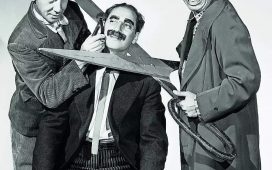
But what about the presence and role of women in other sectors, such as advertising and marketing services? While this industry employs many women, their number in key leadership positions are still relatively low. It was only in 2017 that the Advertising Agencies Association of India (AAAI) awarded its Lifetime Achievement Award for the first time to a woman, Roda Mehta.
What about women in ads? Are there too few? Too many? And how are they presented?
In his 1976 book, Gender Advertisements, sociologist Erving Goffman conducted an analysis of women in US advertising. Examining hundreds of print ads of the 1960s, Goffman concluded that women tend to get portrayed in ‘hyper-ritualistic’ roles, and they are always shown as ‘less’ than the male characters, playing the role of a support character.
If we were to do an analysis of Indian video ads, we will see something that reflects this hyperitualism. Women are shown in gender-defined roles of cooking, cleaning, washing, feeding, caring, and shopping. But this is not just an Indian phenomenon. It is common in many countries. This has led to the formation of the Unstereotype Alliance, where companies such as Unilever and Nestle have pledged to discourage the portrayal of women in gender-defined roles. P&G’s Ariel advertising in its ‘Share the Load’ video series reflects this ethos.
I won’t go into the Bechdel Test – a measure of the representation of women in film and other media – and how Indian movies rate on that. The answer is obvious.What are the downsides of showing men doing household chores when they do so little? When a brand uses a man instead of a woman, it could send out the message ‘more’ than what is intended. Why is a man cooking? Is the woman too busy to cook? Will the family enjoy what he makes?Some years ago, when the agency handling an SUV brand wanted to show a woman driving the vehicle, there was strong pushback from the client. Are we saying that the SUV is meant for women? Will women be buying the SUV? What happens if men see it as a ‘feminine’ car? The argument that won went something like this. This is a monster of an SUV. No man is going to see it as a ‘feminine’ car. By showing a woman driving it, we are saying that it is an easy vehicle to drive and manoeuvre.
That discourse won the day, and the brand was launched with an attractive women chauffer driving around her male boss. The brand went on to become a top seller. No one mistook the SUV for a feminine women vehicle. In fact, Hero Pleasure, a specially designed scooter for women, had a line that went, ‘Why should boys have all the fun?’
The idea of showing men in roles that a woman plays in an average home is excellent. But this must be seen in the context of what the subtext of the message will be. Just as in the case of the SUV, using a woman had its positives and negatives. Showing a man using a sambar powder brand will have some positives and some negatives. On the positive side: easy to use, easy to cook. But on the negative side, could it imply: meant for novices, not for women who are good at cooking, more expensive?
Smart brands are finding a way around this by showing men and women cooking together as a sign of bonding. That may hold the answer. By plonking a man in the place of a woman forcefully may cause more confusion. We need to find out what the subliminal message will be and find a suitable answer. Just as in Parliament. Reserving seats for women is the first step. Many more steps will have to be carefully curated so that we end up with a more equitable and humane set of lawmakers.











